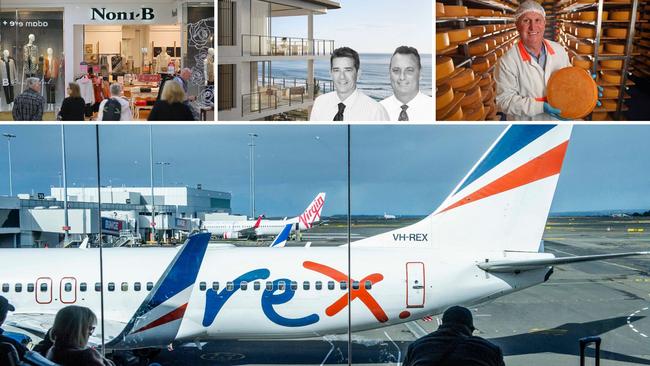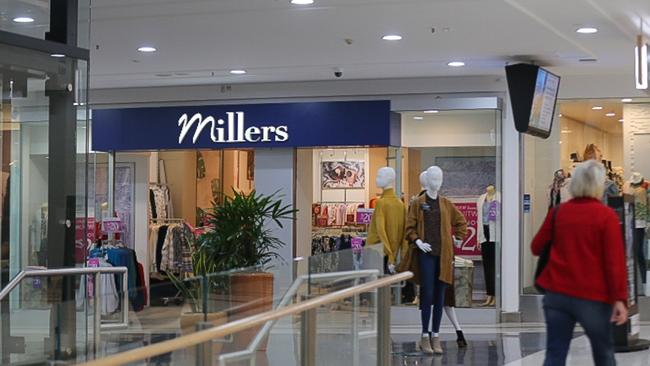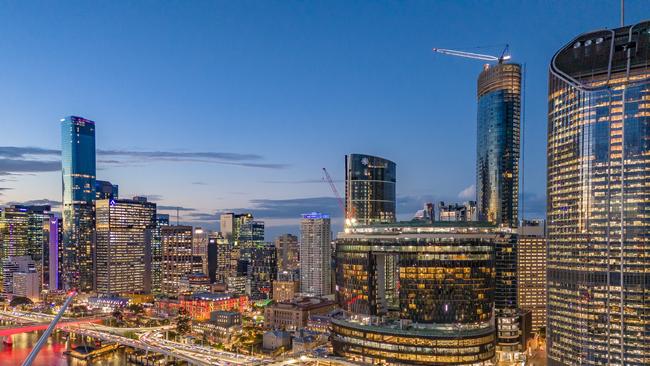Business failures surge to record highs as interest rate cuts fail to offset cost pressures
Any further interest rate cuts will come too late for thousands of Aussie businesses, with company collapses on track to top a heart-stopping 15,000 before the financial year is over. Read why more are failing than ever before

Business
Don't miss out on the headlines from Business. Followed categories will be added to My News.
Business failures have surged by 45 per cent this financial year, as elevated operating expenses, cost-of-living pressures, and an aggressive crackdown on unpaid tax debts force companies to close.
Last year’s record high of 11,053 insolvencies has already been surpassed with three months still remaining in the fiscal year, and appointments are now forecast to exceed 15,000, despite the Reserve Bank delivering cost-of-living relief through rate cuts.
Figures from the Australian Securities & Investments Commission show 11,162 insolvency appointments occurred from July 1 to April 6 — a 44.1 per cent increase on the 7748 appointments recorded during the same period a year earlier.
There were 3393 appointments in the March quarter — the lowest quarterly total this financial year, even though it included the traditionally quieter summer months — but still 27.6 per cent higher than the same period in 2024.
Business Reset restructuring practitioner Jarvis Archer said insolvency numbers were on track to exceed 15,000 this financial year, as small businesses faced mounting pressures.
KPMG turnaround and restructuring partner David Hardy said insolvencies were likely to continue climbing despite the RBA entering a rate-cutting cycle.
“I don’t see them materially coming down anytime soon,” he said. “Any real benefits from rate cuts might not flow through until the end of 2025. Even with some rate relief, other pressures like elections, tariffs, and a more active ATO will keep the insolvency environment challenging.”
Mr Hardy said it was one of the toughest periods businesses had faced, with the current downturn unfolding more slowly than the Global Financial Crisis.
“It’s challenging as a business when you’ve got demand pressures and the consumer doesn’t have the dollars to spend, and then also your cost base going up as well. A lot of businesses are getting squeezed from both sides of the equation,” he said.
“It feels like we were sleepwalking into this — it’s been slow and steady, not sudden like the GFC. It’s taken a couple of years to build up to where we are now.”
Cost pressures from higher wages, energy bills, food inflation and increases in alcohol excise, coupled with penny-pinching consumers, have hit hospitality businesses particularly hard, with the sector closing down faster than others. Collapses in hospitality have surged 57 per cent to 1845 so far this financial year.

Construction remains the largest sector for insolvency appointments, although the growth rate has moderated to 24 per cent, compared with 34.1 per cent between 2023 and 2024. Retail trade insolvencies have risen 17.5 per cent.
McGrathNicol restructuring partner Matthew Caddy said the accommodation and food services sector was heavily exposed to consumer demand, and that a single 25 basis point rate cut would make “zero difference”.
“It’s not just one sector under stress — it’s right across the whole economy and there are no green shoots,” he said.
“Until there’s an improvement in consumer confidence, hospitality and other discretionary sectors will continue to struggle.”
The Australian Taxation Office’s aggressive pursuit of small business debts has also contributed to the rise in insolvencies, as it moves to reduce its $35bn small business debt book following pandemic-era leniency.
Mr Archer said the ATO was now deploying enforcement tools — including director penalty notices, garnishee notices, winding-up applications, and credit bureau reporting — earlier and more frequently.

“Rather than targeting only businesses that are clearly insolvent, the ATO is now looking to intervene in early-stage financial difficulty,” he said.
“Since the start of April, the ATO can require a business to transition from quarterly to monthly BAS and PAYG reporting, enabling it to track unpaid debts more closely and act sooner to force compliance.”
NSW recorded the highest number of insolvencies at 4235 due to its status as the nation’s business capital, although its 28.7 per cent growth was the slowest of any state.
Victoria saw insolvencies jump 59.3 per cent to 3158 appointments in the year to March 31. Queensland rose 37.4 per cent to 1971, while Western Australia lifted 29.5 per cent to 667.
Among the smaller states, South Australia rose 54.5 per cent to 476, while Tasmania surged 81 per cent.

Retail giant Mosaic Brands — owner of Millers, Rivers, Crossroads, Katies, Noni B and Autograph — was wound up this month after administrators failed to find a buyer, following a voluntary administration process triggered by $318m of debt.
Embattled casino operator Star Entertainment narrowly avoided collapse after US group Bally’s Corporation swooped in with a $300m rescue package. Star had been in financial strife for the past year, bleeding substantial sums of money as earnings plunged.
Major South Australian milk producer Beston Global Food Company was wound up late last year after efforts to find a buyer during voluntary administration proved unsuccessful.
Rex – Australia’s largest regional airline – fell into the hands of administrators last year after a failed attempt to compete head on with Qantas and Virgin Australia on major capital city routes ended in insolvency. Labor has vowed to underwrite future regional flights with a buyer yet to be found.
Veteran Queensland builder Stokes Wheeler entered liquidation earlier this month, with debts topping $20m, after a rescue plan from its directors failed to materialise. The company, which has offices in Brisbane and on the Gold Coast, had entered voluntary administration in February following multiple loss-making projects over the past five years.
More Coverage
Originally published as Business failures surge to record highs as interest rate cuts fail to offset cost pressures





